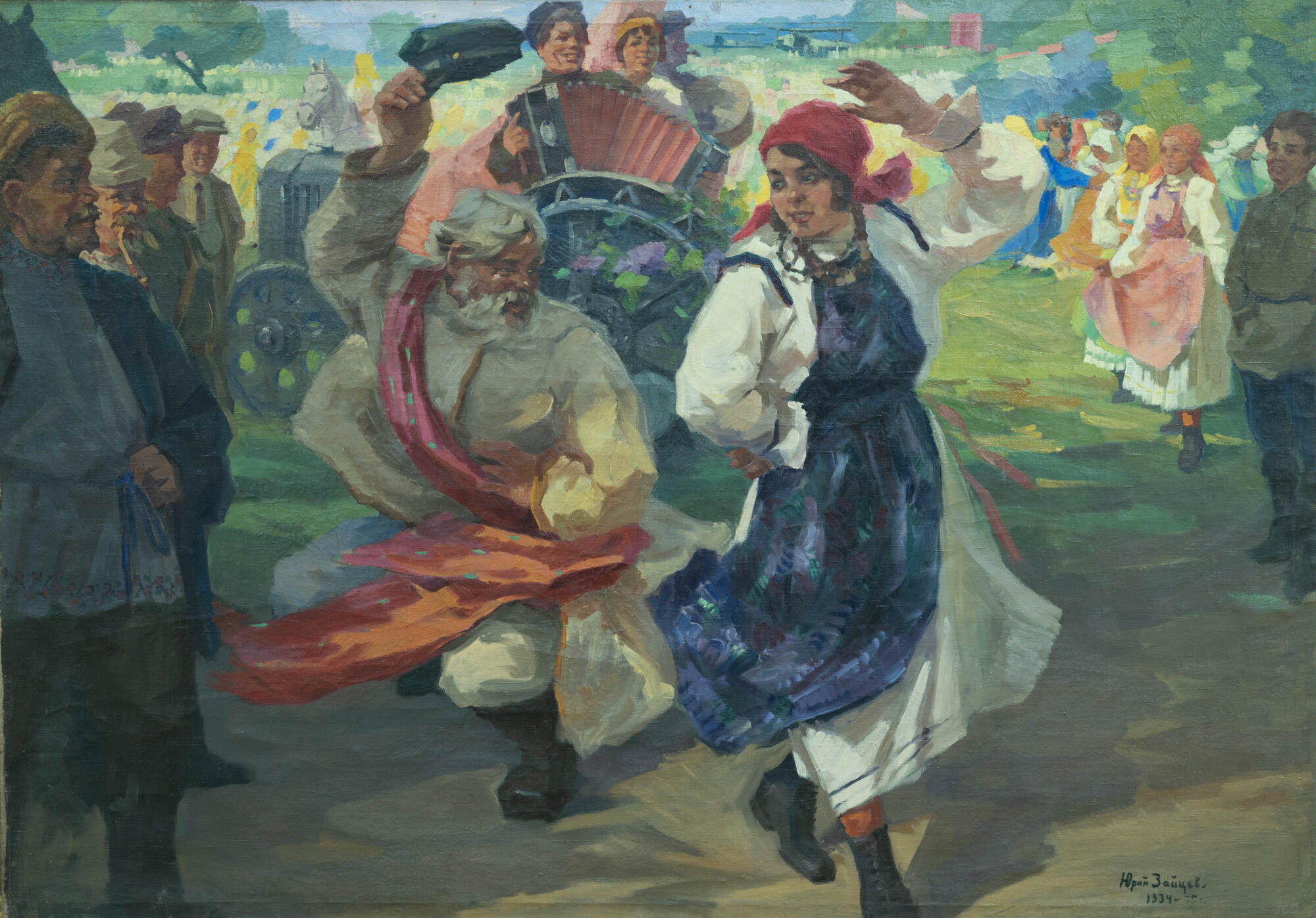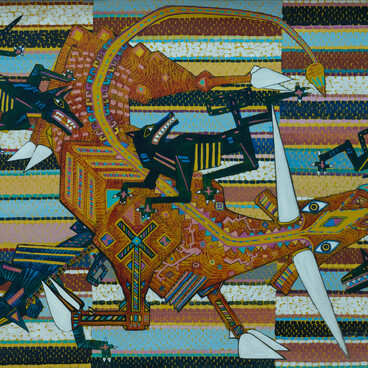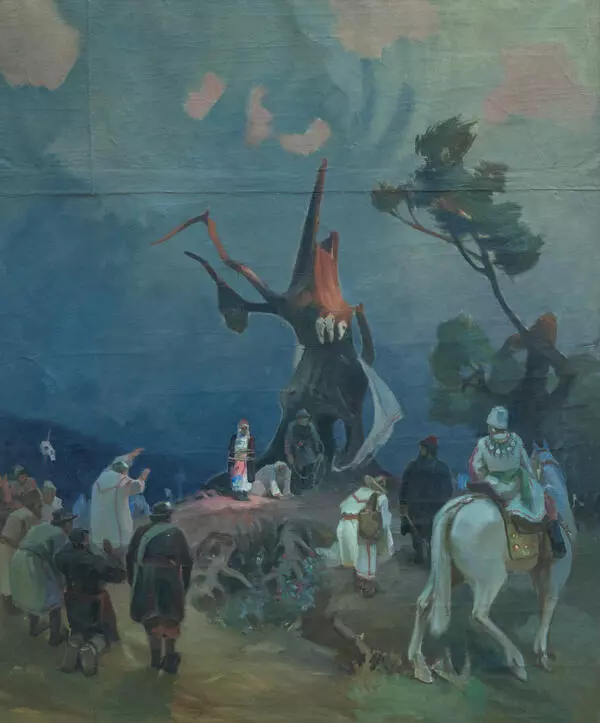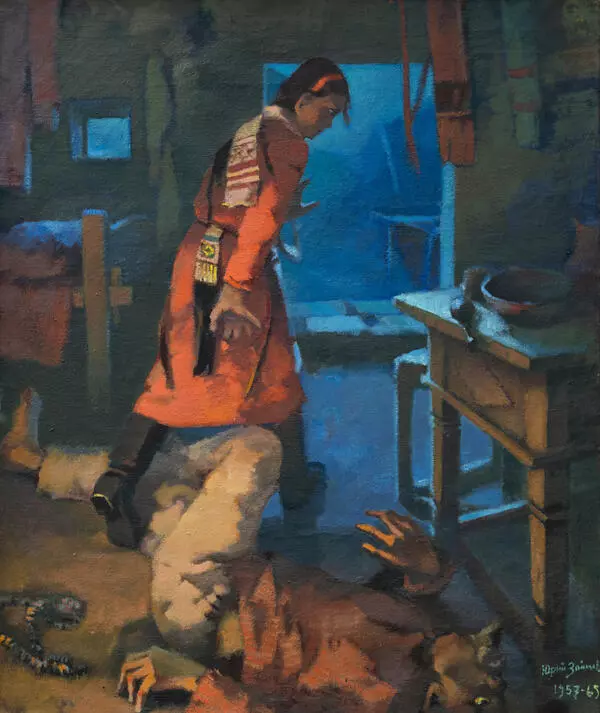Yury Antonovich Zaytsev was a painter, Honored Artist of the Chuvash Republic, and one of the first painters to use the theme of the collective farm holiday in Soviet art, which however is considered to be best reflected only in 1937 in the paintings of Sergey Gerasimov and Arkady Plastov. Between 1934 and 1935, Zaytsev created the canvas “Akatui”.
The painting was dedicated to the exhibition, organized to honor the 15th anniversary of the Chuvash Republic. The artist had his first ideas for the picture during his participation in a government expedition to Chuvash villages. The artist’s drawings, studies, and sketches made while in those Chuvash villages indicate his serious approach to studying the national character. The surroundings, appearance, details of everyday life, temperament, and ingenuous fun of the open-hearted characters endow the painting with distinctive national traits. The work captivates the viewers by the spirited manner of painting, vivid coloring, and perfectly rendered mood of the crowd. The profound detailing testifies to the artist’s sharp observation skills: he managed to truthfully convey the psychological state of the participants.
The artist depicted the celebration of labor and singing in full swing, as evidenced by the central part of the composition, which shows the frolicsome dance of a gray-bearded old man and a young Chuvash girl. This scene involves many other celebrants. The painter uses it to express the general mood of the collective farmers, their joy and contentment with the results of their efforts.
In search of expressive images, Yury Zaytsev created several preparatory sketches for the painting. In one of them, he worked on the left side of the composition. He did not include the woman wearing a pink scarf in the final painting and relocated the old man smoking a pipe a little further into the pictorial space.
The festivity of the moment is emphasized by the emotional and expressive coloring. Three primary colors — white, red and green — are repeatedly found in the painting in various forms. The pure white contrasts with the red and green, acquiring warm hues in the sunlight and cold ones in the shadow; the alternating cold and warm tones create a balanced color palette.
The painting was dedicated to the exhibition, organized to honor the 15th anniversary of the Chuvash Republic. The artist had his first ideas for the picture during his participation in a government expedition to Chuvash villages. The artist’s drawings, studies, and sketches made while in those Chuvash villages indicate his serious approach to studying the national character. The surroundings, appearance, details of everyday life, temperament, and ingenuous fun of the open-hearted characters endow the painting with distinctive national traits. The work captivates the viewers by the spirited manner of painting, vivid coloring, and perfectly rendered mood of the crowd. The profound detailing testifies to the artist’s sharp observation skills: he managed to truthfully convey the psychological state of the participants.
The artist depicted the celebration of labor and singing in full swing, as evidenced by the central part of the composition, which shows the frolicsome dance of a gray-bearded old man and a young Chuvash girl. This scene involves many other celebrants. The painter uses it to express the general mood of the collective farmers, their joy and contentment with the results of their efforts.
In search of expressive images, Yury Zaytsev created several preparatory sketches for the painting. In one of them, he worked on the left side of the composition. He did not include the woman wearing a pink scarf in the final painting and relocated the old man smoking a pipe a little further into the pictorial space.
The festivity of the moment is emphasized by the emotional and expressive coloring. Three primary colors — white, red and green — are repeatedly found in the painting in various forms. The pure white contrasts with the red and green, acquiring warm hues in the sunlight and cold ones in the shadow; the alternating cold and warm tones create a balanced color palette.





